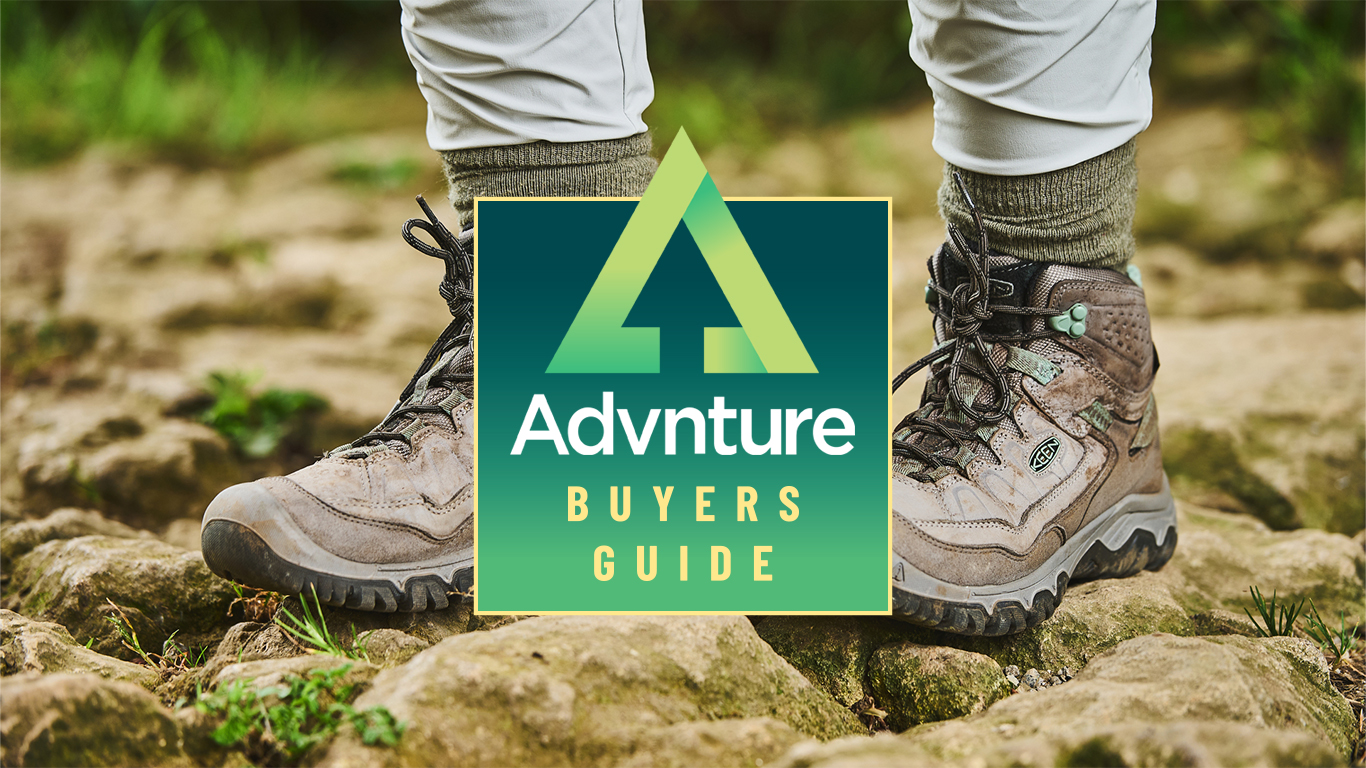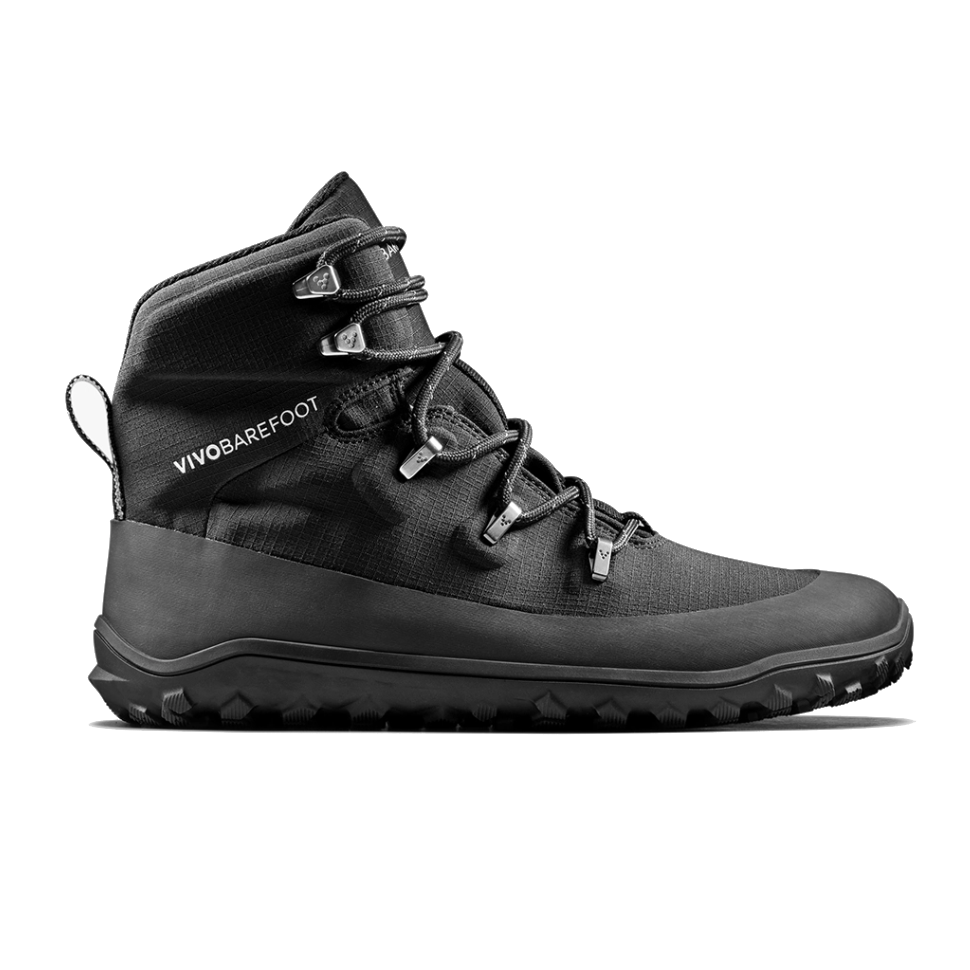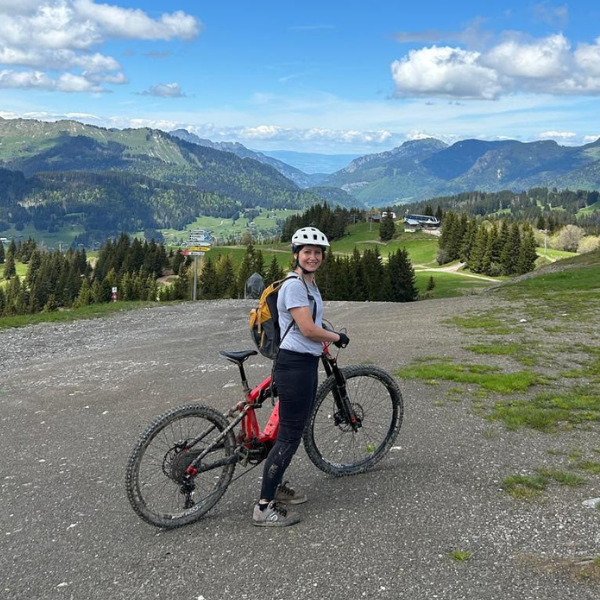The best hiking boots and shoes for wide feet: stride out with confidence in well-fitting footwear
Regular boots too narrow? We've tested some of the best hiking boots and shoes for wide feet

Having the best hiking boots and shoes for wide feet can make an amazing difference to keep you comfy on long days exploring. Rubbing, numbness or excruciating joint ache from cramped toes are common upshots of squeezing feet into shoes or boots that are too narrow. Thankfully though, with the best hiking boots, an increasing number of brands are catering for people who need this extra room.
Whether you crave a wide toe box to allow your toes can flex and spread naturally, or a roomier chassis generally, brands such as Keen and Vivobarefoot are designing hiking boots and shoes that work brilliantly for wider foot shapes.
It's great to see women-specific boots and shoes available in wider fits too – previously we've been forced to buy men's versions, only to be scuppered by too-high a cuff or not enough arch support.
And if you want to hike long distances, when you'll be on your feet for longer periods of time or back-to-back days, a wider fit will give your feet chance to swell, especially on warm days.
You can always pad out a wide-fit boot or shoe with a pair of the best hiking socks. Start with a thick pair at the start of a hike, then swap to a thinner pair if you need to as your feet warm up.
Our expert hikers have tested everything in this guide on varied terrain, including rough, waterlogged trails in the Lake District National Park and spongy routes in the south of the UK, against claims made by the brands. Read on to see how they fared on factors such as comfort, waterproofing, breathability and value for money.
The quick list
This is our quick list, a brief overview of the best hiking boots and shoes for wide feet. To find out more about each product, see our more detailed write ups further down the page.

These wallet-friendly boots will see you through three seasons of hiking in all but the most extreme of conditions. They're comfy from the off and have a decent level of protection

A waterproof boot that prioritizes pace over protection. It's easy to pull on and very comfortable to wear with plenty of padding – a good choice for long days on easy trails

Boasting great eco credentials, these minimalist boots give a superb trail feel. Barefoot fans will love the grippy sole combined with comfy upper

If you love to hike on mixed terrain below the high peaks, these handsome boots will give you unparalleled performance. They give ankle support and lovely out-the-box comfort

The latest incarnation of the classic Tracker has been given an overhaul and now features fully recycled, all-vegan materials and a waterproof membrane
The best hiking boots and shoes we recommend in 2025
You can trust Advnture
Best all-round hiking boots for wide feet

Specifications
Reasons to buy
Reasons to avoid
The brand Keen is loved by many for its wide-fit boots and shoes, and the Targhee IV doesn't disappoint with its roomy toe box that allows your feet to spread and flex.
Despite the extra space, your foot won't slide about thanks to the heel-lock system that keeps it in place, even on techy terrain. And the inner and midsoles use Keen’s Luftcell air-injected padding to create plenty of comfort and bounce.
There's good toe protection, however, our tester Rosee Woodland would have appreciated more protection for the ball of her foot than the Targhee IVs’ shank gives. As far as waterproofing goes, these stand up to the job as a solid three-season boot, with a waterproof inner membrane and a leather and mesh water-repellent outer, as well as a bellows tongue to keep things impenetrable around the front.
The Targhee IVs won't hold up in the most extreme conditions, but as long as you're happy to stick to more modest trails and avoid the worst weather, they should see you right.
Read our full Keen Targhee IV hiking boot review
Best wide hiking boots for easy trails

Specifications
Reasons to buy
Reasons to avoid
Keen has made a name for itself with lightweight hiking footwear that propels you along the trails without the heft of a regular hiking boot. These Zionics come in a mid and low cut; both help keep you agile on the trails and let you walk for longer without leg fatigue.
Our hiking expert Pat Kinsella put the mids to test in hot but wet conditions on trails at the lower end of the technical scale in the south of the UK. He loved the top-class cushioning and comfort levels and appreciated the fair amount of flex the boots had, despite a stability shank.
The PU insole with arch support and extra padding around the Achilles upped comfort levels further, while the heel “crash pad”, created by the outsole extending around the heel, helps absorb impact of repeated footfall.
Grippier soles that provide more control and braking would benefit these boots, and our tester did miss the toe protection found on other Keen models, which had presumably been sacrificed to save weight.
Read our full Keen Zionic waterproof hiking boots review
Best wide hiking boots for trail feel

Specifications
Reasons to buy
Reasons to avoid
When it comes to comfort, barefoot boots offer something different to other hiking boots and shoes on test here. The wide toe box for a start allows feet to spread with little restriction.
Then there are the minimalist uppers. The upper of the Magna Lite SGs is one unit, almost like a more substantial sock, says our expert hiker Julia Clarke, so there is no separate tongue. The stretch collar is tightened with two wing-like elements that you pull around your ankle giving a tight and secure fit.
The boots are super-flexible too, easily rolling up so you can pack them into small spaces to take on your travels. These good-looking boots don't have a midsole, but do use an insole and a 2.5mm sole base to give some protection from the ground.
Lacking rigidity and all-weather protection, you are limited when it comes to technical terrain or extreme weather conditions. And, they aren't substantial enough to support you while wearing a heavy backpack. However, when used in the type of terrain and conditions they’re designed for (the SG in the name stands for 'soft ground'), these are great, comfy rides.
Read our full Vivobarefoot Magna Lite SG hiking boots review
Best wide hiking boots for bunion relief

Specifications
Reasons to buy
Reasons to avoid
When it comes to comfort, not many brands go as far as Hanwag, creating special versions of its hiking boots and shoes for people who suffer with bunions. These Banks hiking boots (also available in a low-cut walking shoe) are available wider at the toe joint with a soft cover that doesn't press on the sensitive area, allowing more people to hike pain-free.
The uppers are made from super-soft nubuck leather with sensational out-of-the-box comfort levels. The plentiful padding offers extra warmth in all but the coldest of conditions.
Our tester was excited to find that all this heightened comfort doesn't come at the cost of performance. The innovative design of the chassis and the positioning of the lace hooks means unparalleled level of ankle support.
A Gore-Tex lining gives a great level of breathable protection and the Vibram sole is excellent on wet, gloopy surfaces.
If you don't mind a toecap that's a little minimalist and lugs that aren't suited for high mountain terrain, these boots will serve you well on lower-land trails for years to come.
Read our full Hanwag Banks hiking boots review
Best wide hiking boots for eco credentials

Specifications
Reasons to buy
Reasons to avoid
The Vivobarefoot Tracker Textile AT has been given a few upgrades since its last incarnation. It's now made from fully vegan and fully recycled materials, meaning it has a lighter impact on the planet than other boots in this guide.
It's still a heavyweight when it comes to performance though. The uppers give your feet and ankles plenty of protection on stony trails and the waterproof membrane keeps them dry through puddles and river crossings.
The removable thermal insole is a nice addition, meaning you can still wear these barefoot hikers on days when the mercury hits zero.
The 4mm lugs on the grippy outsoles give a nice bit of relief from uneven surfaces and served our expert tester Julia Clarke well on wet leaves, country paths and even steep slopes and wet bogs. However, she would have liked more traction on wet rocks and steep, muddy slopes.
As with the Magna Lites, these barefoot boots are comfy from the off, with a roomy fit and wide toe box. The soles are super-flexible, allowing you to walk effortlessly on all but the most slippery terrains.
They have a hefty price tag, but if you love barefoot hikers and want a bit more protection than the average style, you'll be glad you invested.
Read our full Vivobarefoot Tracker Textile AT review
Best hiking boots and shoes for wide feet comparison table
Hiking boot or shoe | Price | Weight | Materials | Best use |
|---|---|---|---|---|
Keen Targhee IV | $170 (US) / £160 (UK) / €180 (EU) | 585g / 1.3lb (per boot) | Nubuck leather and 100% recycled performance mesh upper, KEEN.DRY waterproof inner membrane, Luftcell midsole, Luftcell insole, KEEN.RUGGED outsole | Three-season hiking, trekking and hut to hut adventures. Not the lightest so not suitable for speed hikes |
KEEN Zionic | $170 (US) / £160 (UK) / €180 (EU) | 480g / 16.93oz (men's per boot); 450g / 15.87oz (women’s per boot) | Recycled Ripstop mesh upper with TPU overlays, KEEN.DRY waterproof membrane; TPU outsole | Speedy three-season hiking on formed trails and fastpacking adventures |
Vivobarefoot Magna Lite SG | $253 (US) / £170 (UK) / €200 (EU) | 350g / 12.5oz (men's per boot); 310g / 11oz (women's per boot) | Vamp Engineered Mesh upper (62% Rcd Cationic Yarn, 38% RPET); Soft ground outsole (60% Polymer, 30% Silica, 10% Vulcanized Chemical); 100% RPET insole and laces | Low-level hiking, trekking and fastpacking on soft terrain in reasonably warm weather. Can also be worn scrambling |
Hanwag Banks | $260 (US) / £180 (UK) | 625g / 1lb 6oz (men's per boot) | Nubuck leather / Suede / Cordura nylon upper; Gore-Tex membrane; Vibram Endurance Pro sole | Three-season walking on most trails below technical alpine |
Vivobarefoot Tracker Textile AT | £200 / $250 | 406g / 14oz | Upper: 95% Recycled Polyester, 5% Spandex; Insole: 40% Polyester, 40% PU Foam, 20% Aluminum; Outsole: 20% Natural Rubber, 55% Synthetic Rubber, 25% Additives | Hiking on all but wet, steep trails |
Meet the testers

Rosee Woodland developed a taste for adventure at a young age, growing up in a home where camping was the default holiday, bike-packing the length of France in her teens. The years she later spent as a mountain biking journalist gave her an appreciation of decent kit. These days she loves a water-based adventure, and is an outdoor swim coach, and a keen free diver. She has a soft spot for Northern Ireland's Mourne mountains, and can also be found hiking and kayaking in Pembrokeshire and the South West of the UK.

Author of Caving, Canyoning, Coasteering…, a guide to outdoor adventures around Britain, Pat has spent 20 years pursuing stories involving boots, bikes, boats, beers and bruises. En route he’s canoed Canada’s Yukon River, climbed Mont Blanc and Kilimanjaro, skied and mountain biked through the Norwegian Alps, run an ultra across the roof of Mauritius, and set short-lived records for trail-running Australia’s highest peaks and New Zealand’s Great Walks. He’s authored walking guides to Devon and Dorset, and once wrote a whole book about Toilets for Lonely Planet. Follow Pat’s escapades on Strava and Instagram.

Julia Clarke is a staff writer for Advnture.com and the author of the book Restorative Yoga for Beginners. She loves to explore mountains on foot, bike, skis and belay and then recover on the the yoga mat. Julia graduated with a degree in journalism in 2004 and spent eight years working as a radio presenter in Kansas City, Vermont, Boston and New York City before discovering the joys of the Rocky Mountains. She then detoured west to Colorado and enjoyed 11 years teaching yoga in Vail before returning to her hometown of Glasgow, Scotland in 2020 to focus on family and writing.
FAQs on the best hiking boots and shoes for wide feet
Everyone loves the thought of heading out on a hike in the most comfortable pair of hiking boots or shoes, but when it comes to finding a great fit for wide feet that will let you walk for hours pain-free, it's a mission in itself.
There's loads advice in our feature on how to choose a pair of hiking boots, but sometimes you need to hone in on the qualities that make a pair of boots or shoes better for wide feet.
It goes without saying that, where possible, you should always try on boots before you buy. Thankfully, a great many online retailers offer generous returns policies, allowing you to order multiple pairs to try for size, then returning for free (check the small print before you order).
Use the info below to help focus your online browsing to help spot easily the best pairs of hiking boots and shoes for wide feet.

How should wide hiking boots fit?
Hiking boots and shoes are designed on specific lasts (an artificial model of a foot), and each brand will use a different foot shape to build their footwear around. It may take a fair bit of trying-on to work out which brand suits your foot shape best. Whenever you are trying on, remember to use a good pair of hiking socks to help get the perfect fit.
A lot of people with wide feet struggle with small toe boxes. A good-fitting boot will have a toe box that doesn't cramp your toes, but allows them to flex and splay as you walk. Your toes shouldn't move forward and hit the end of your shoe as you stride as this can cause bruising and blisters.
You should get good cradling and support from the mid-part of the shoe. It shouldn't feel overly roomy – foot can roll around and cause you instability. The heel area should cup the foot nicely, without pinching, and help hold your foot in the back of the boot or shoe, rather than letting it slip forward.
Don't forget, there are hiking insoles that can dramatically change the fit of a boot or shoe.
Do I need wide hiking boots or shoes?
Loose-fitting shoes can put you at risk when you're hiking as your foot can roll around and slip inside the shoe, decreasing your stability and putting you more at risk of slipping or tripping. Your toes will start working harder to grip inside the shoe, making them tired and causing you greater discomfort. Your legs will start overworking too, to counteract an unstable ankle. Hiking boots and shoes should fit just right – snug, without pinching – and keeping your foot nicely in place, even on ascents and descents.
Should I size up if my feet are wide?
Ideally, if the boots or shoes you've ordered aren't wide enough for your feet, you should return them and order the wide-fit versions, or keep looking for a different pair that do allow your feet to sit comfortably without being piched. However, generally going up a size or a half a size in a shoe or boot will give you some extra width, so if they are only very slightly too narrow, give it a go.
Are wide hiking boots and shoes more expensive?
Hiking boots that cater for the masses use lasts based on very average foot widths and lengths, so you might find that more-specialist wide-fit footwear isn't as cheap. However, whenever you pay more for your outdoor gear you can usually expect it to last longer. Investing in a pair of hiking boots and shoes that fit like a glove is a great choice and means you'll use them for longer and lessen your environmental impact.
In our guide we've chosen boots from brands that promise quality. You may find Gore-Tex waterproofing or Vibram soles, and other innovative materials that are flexible but durable. They may carry a higher price tag, but we always consider overall value for money when writing hiking boot and shoe reviews.
What materials are used in wide hiking boots and shoes?
A lot of hiking boots and shoes for wide feet have uppers that are made of innovative, synthetic materials that are known for being light and flexible to mold around the foot and not restrict feet. The materials can still offer great weather protection and durability, but they don't require a breaking-in period. Soft, nubuck leathers are sometimes used but expect to pay a higher price for this luxury.
Advnture Newsletter
All the latest inspiration, tips and guides to help you plan your next Advnture!

Charlie is a freelance writer and editor with a passion for hiking, biking, wild swimming and active travel. She recently moved from Bristol to South Wales and now refuses to leave her front door without one of the following: lightweight hikers, wetsuit, mountain bike, tent. Having bought a fixer-upper home that backs on to protected woodland, her love of nature and wildlife has intensified and the dark skies have kickstarted a new fondness for stargazing.
